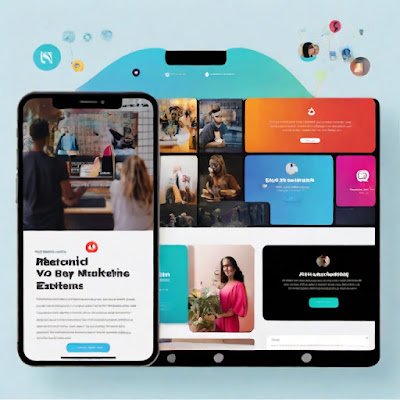 |
| Image created with Leonardo.ai |
Everyody is complaining about their subscribers. They are saying that only 30% are opening their emails. Others said if you got more than 30% openings you are the best. I've been thinking and wondering about this issue. Being a digital marketer since the 2000's I feel grateful that today the customers with whom I work are getting 50% and 60% opening rates in their mailing list.
How? Here are my three real tips
1. You don't know what your audience want?
Yes. I know, you know they subscribe because of you, because they saw one post or they saw a video or they attended your webinar. I understand, but the reality is that you did not ask them what they really want or how they really want or how they want the information you are sharing to be presented to them.
The analytics of your software, even though, a lot of influencers, coaches said they don't work anymore, the reality is that they are wrong. They really do not understand about the analytics. Also, they want to guide you to their videos, posts, saying something different. The question is: is the analytics does not work, how Amazon.com is capturing a lot of data about their customers, buyers and sellers?
You need to read the analytics the right way, you need to understand why they are opening a video and they are not opening the link with your photo. You also need to know what they prefered to see: a video or a photo? To read a long paragraph or a short one?
As well, you need to remember what was the information you shared that attracted them to your list. If you gave something for free, you have to continuing giving free gifts. If you attracted them with a free gift and now you decided you are not going to give them more free stuff: Big mistake. You lost them.
2. You don't have a content plan
3. You are not learning the right way anymore
I am not saying here that you're not learning, that you're not watching, reading, listening to tons of videos or podcasts or audiobooks, the issue is that you're doing it the wrong way. You:
1) are copying what others are saying;
2) you'are not using the pieces of information that will work with your list;
What do I mean with that? If I tell you to send five emails a week to your list is because that is working for me. If you know that sending only one email a week bring you 10 sales, why are you going to send five emails? Because I am a superstar? I don't know your list, not even your subscribers, you should do what is best for your list is your list.
This is happening today because people are not wanting to change, you maybe are not wanting to change, adapt to survive. Example:
During the 2000's yahoo was one of the most populars free email service and search engine, what is happening today? You got the idea.
You must need to check your audience and give them what they want. Be you. Be yourself. Speak to them like you are. Don't copy others. Do not try to use others sales techniques. Test your list. Ask them and do what they said. Customer is always right, right?
For your success...



